Xuan Jin
One-dimensional Adapter to Rule Them All: Concepts, Diffusion Models and Erasing Applications
Dec 26, 2023Abstract:The prevalent use of commercial and open-source diffusion models (DMs) for text-to-image generation prompts risk mitigation to prevent undesired behaviors. Existing concept erasing methods in academia are all based on full parameter or specification-based fine-tuning, from which we observe the following issues: 1) Generation alternation towards erosion: Parameter drift during target elimination causes alternations and potential deformations across all generations, even eroding other concepts at varying degrees, which is more evident with multi-concept erased; 2) Transfer inability & deployment inefficiency: Previous model-specific erasure impedes the flexible combination of concepts and the training-free transfer towards other models, resulting in linear cost growth as the deployment scenarios increase. To achieve non-invasive, precise, customizable, and transferable elimination, we ground our erasing framework on one-dimensional adapters to erase multiple concepts from most DMs at once across versatile erasing applications. The concept-SemiPermeable structure is injected as a Membrane (SPM) into any DM to learn targeted erasing, and meantime the alteration and erosion phenomenon is effectively mitigated via a novel Latent Anchoring fine-tuning strategy. Once obtained, SPMs can be flexibly combined and plug-and-play for other DMs without specific re-tuning, enabling timely and efficient adaptation to diverse scenarios. During generation, our Facilitated Transport mechanism dynamically regulates the permeability of each SPM to respond to different input prompts, further minimizing the impact on other concepts. Quantitative and qualitative results across ~40 concepts, 7 DMs and 4 erasing applications have demonstrated the superior erasing of SPM. Our code and pre-tuned SPMs will be available on the project page https://lyumengyao.github.io/projects/spm.
Diverse Instance Discovery: Vision-Transformer for Instance-Aware Multi-Label Image Recognition
Apr 22, 2022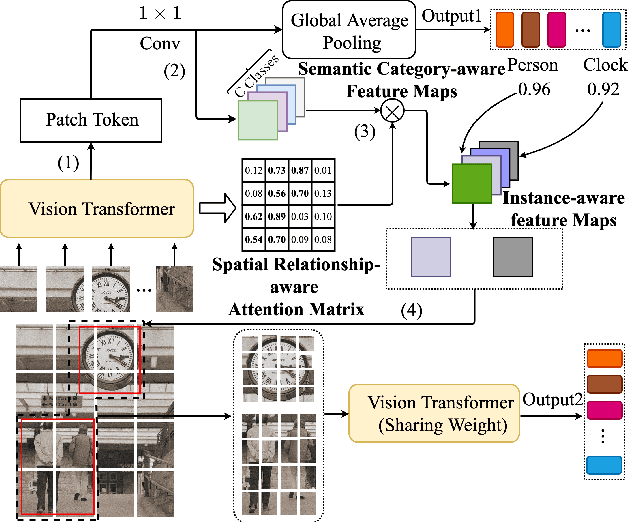

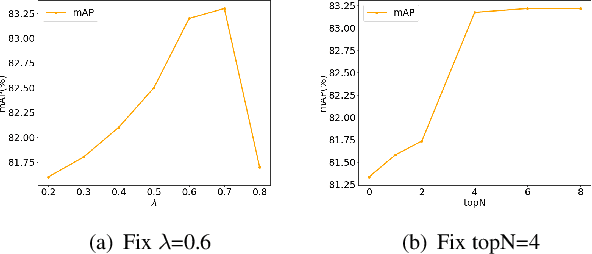
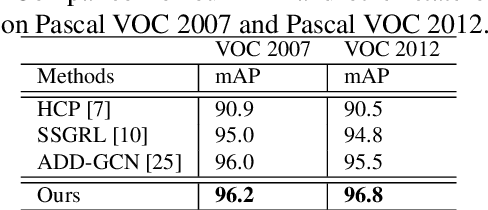
Abstract:Previous works on multi-label image recognition (MLIR) usually use CNNs as a starting point for research. In this paper, we take pure Vision Transformer (ViT) as the research base and make full use of the advantages of Transformer with long-range dependency modeling to circumvent the disadvantages of CNNs limited to local receptive field. However, for multi-label images containing multiple objects from different categories, scales, and spatial relations, it is not optimal to use global information alone. Our goal is to leverage ViT's patch tokens and self-attention mechanism to mine rich instances in multi-label images, named diverse instance discovery (DiD). To this end, we propose a semantic category-aware module and a spatial relationship-aware module, respectively, and then combine the two by a re-constraint strategy to obtain instance-aware attention maps. Finally, we propose a weakly supervised object localization-based approach to extract multi-scale local features, to form a multi-view pipeline. Our method requires only weakly supervised information at the label level, no additional knowledge injection or other strongly supervised information is required. Experiments on three benchmark datasets show that our method significantly outperforms previous works and achieves state-of-the-art results under fair experimental comparisons.
DRDF: Determining the Importance of Different Multimodal Information with Dual-Router Dynamic Framework
Jul 21, 2021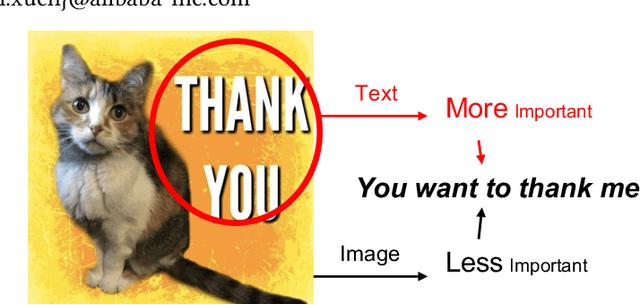

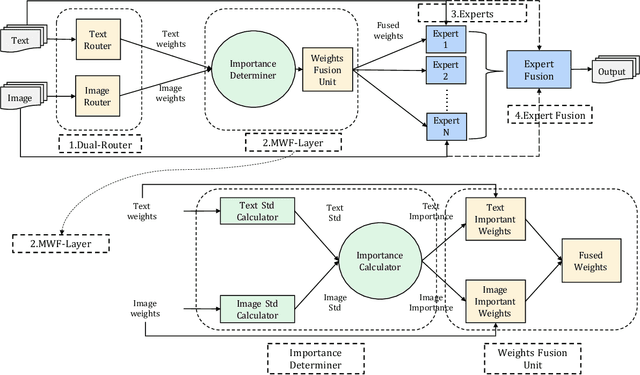
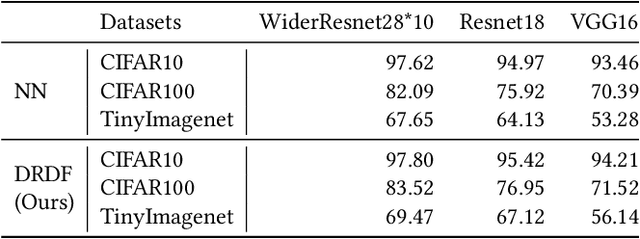
Abstract:In multimodal tasks, we find that the importance of text and image modal information is different for different input cases, and for this motivation, we propose a high-performance and highly general Dual-Router Dynamic Framework (DRDF), consisting of Dual-Router, MWF-Layer, experts and expert fusion unit. The text router and image router in Dual-Router accept text modal information and image modal information, and use MWF-Layer to determine the importance of modal information. Based on the result of the determination, MWF-Layer generates fused weights for the fusion of experts. Experts are model backbones that match the current task. DRDF has high performance and high generality, and we have tested 12 backbones such as Visual BERT on multimodal dataset Hateful memes, unimodal dataset CIFAR10, CIFAR100, and TinyImagenet. Our DRDF outperforms all the baselines. We also verified the components of DRDF in detail by ablations, compared and discussed the reasons and ideas of DRDF design.
RAMS-Trans: Recurrent Attention Multi-scale Transformer forFine-grained Image Recognition
Jul 17, 2021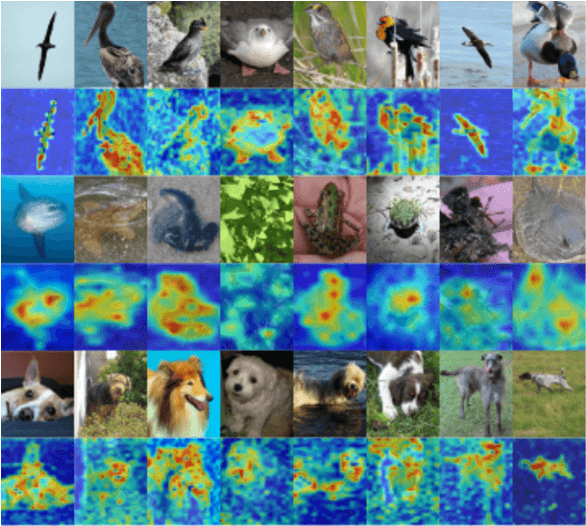
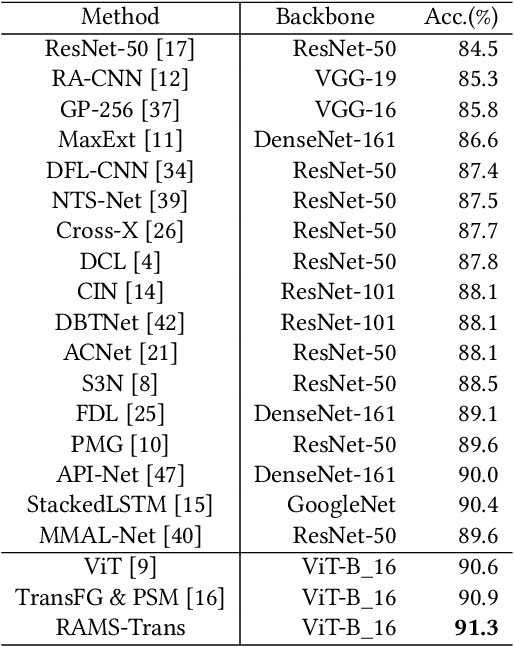
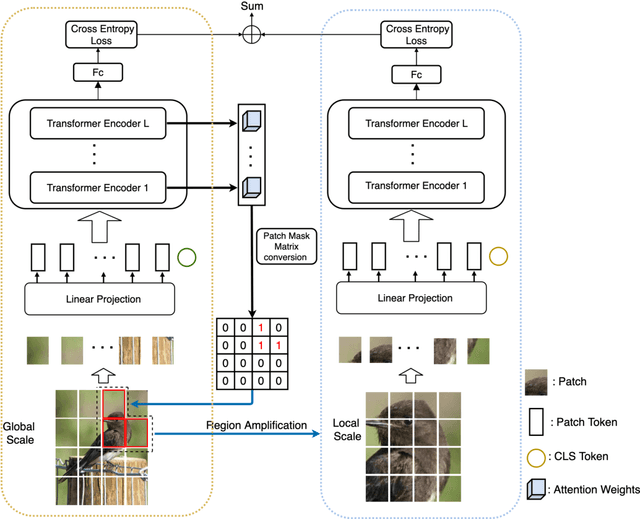
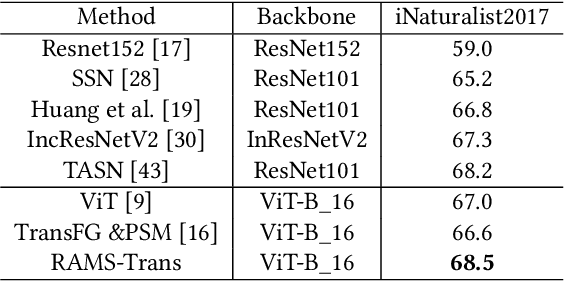
Abstract:In fine-grained image recognition (FGIR), the localization and amplification of region attention is an important factor, which has been explored a lot by convolutional neural networks (CNNs) based approaches. The recently developed vision transformer (ViT) has achieved promising results on computer vision tasks. Compared with CNNs, Image sequentialization is a brand new manner. However, ViT is limited in its receptive field size and thus lacks local attention like CNNs due to the fixed size of its patches, and is unable to generate multi-scale features to learn discriminative region attention. To facilitate the learning of discriminative region attention without box/part annotations, we use the strength of the attention weights to measure the importance of the patch tokens corresponding to the raw images. We propose the recurrent attention multi-scale transformer (RAMS-Trans), which uses the transformer's self-attention to recursively learn discriminative region attention in a multi-scale manner. Specifically, at the core of our approach lies the dynamic patch proposal module (DPPM) guided region amplification to complete the integration of multi-scale image patches. The DPPM starts with the full-size image patches and iteratively scales up the region attention to generate new patches from global to local by the intensity of the attention weights generated at each scale as an indicator. Our approach requires only the attention weights that come with ViT itself and can be easily trained end-to-end. Extensive experiments demonstrate that RAMS-Trans performs better than concurrent works, in addition to efficient CNN models, achieving state-of-the-art results on three benchmark datasets.
The Open Brands Dataset: Unified brand detection and recognition at scale
Dec 14, 2020
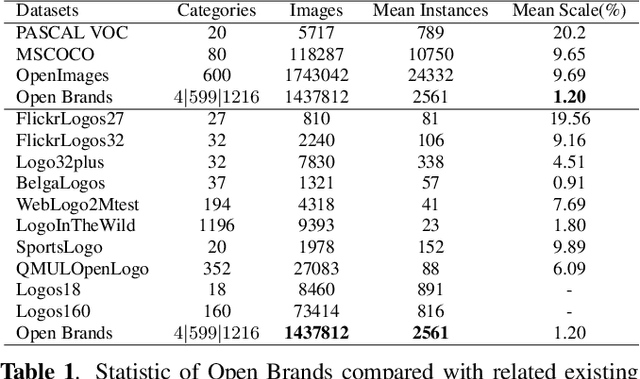
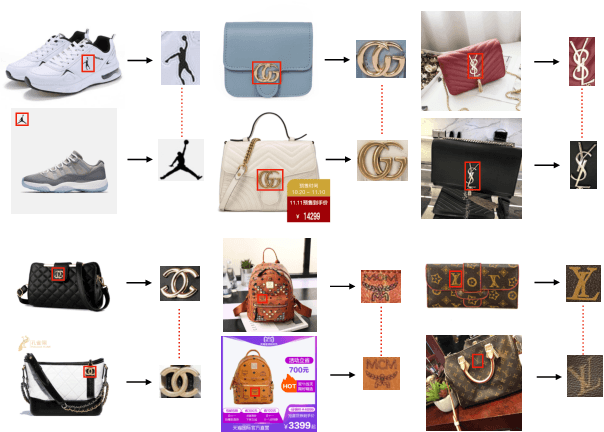

Abstract:Intellectual property protection(IPP) have received more and more attention recently due to the development of the global e-commerce platforms. brand recognition plays a significant role in IPP. Recent studies for brand recognition and detection are based on small-scale datasets that are not comprehensive enough when exploring emerging deep learning techniques. Moreover, it is challenging to evaluate the true performance of brand detection methods in realistic and open scenes. In order to tackle these problems, we first define the special issues of brand detection and recognition compared with generic object detection. Second, a novel brands benchmark called "Open Brands" is established. The dataset contains 1,437,812 images which have brands and 50,000 images without any brand. The part with brands in Open Brands contains 3,113,828 instances annotated in 3 dimensions: 4 types, 559 brands and 1216 logos. To the best of our knowledge, it is the largest dataset for brand detection and recognition with rich annotations. We provide in-depth comprehensive statistics about the dataset, validate the quality of the annotations and study how the performance of many modern models evolves with an increasing amount of training data. Third, we design a network called "Brand Net" to handle brand recognition. Brand Net gets state-of-art mAP on Open Brand compared with existing detection methods.
Heuristic Domain Adaptation
Nov 30, 2020
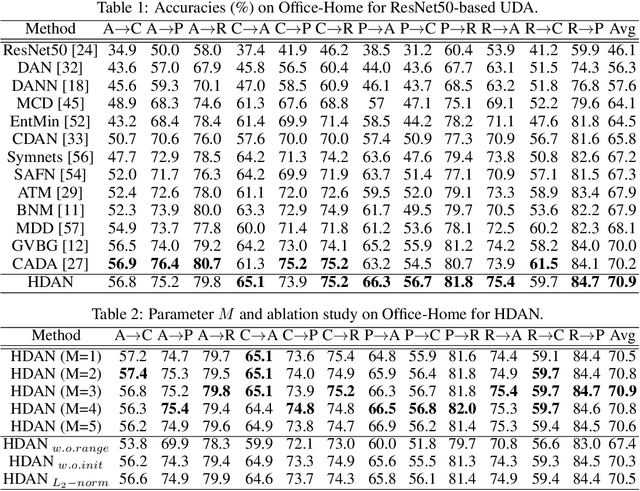
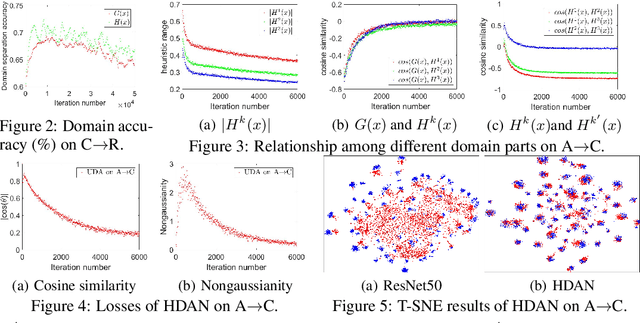
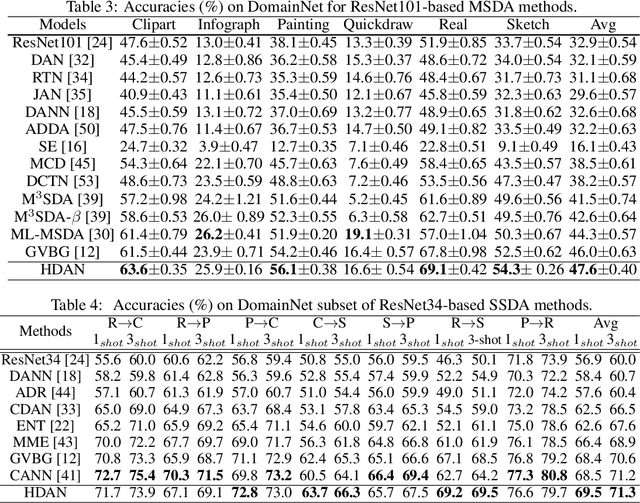
Abstract:In visual domain adaptation (DA), separating the domain-specific characteristics from the domain-invariant representations is an ill-posed problem. Existing methods apply different kinds of priors or directly minimize the domain discrepancy to address this problem, which lack flexibility in handling real-world situations. Another research pipeline expresses the domain-specific information as a gradual transferring process, which tends to be suboptimal in accurately removing the domain-specific properties. In this paper, we address the modeling of domain-invariant and domain-specific information from the heuristic search perspective. We identify the characteristics in the existing representations that lead to larger domain discrepancy as the heuristic representations. With the guidance of heuristic representations, we formulate a principled framework of Heuristic Domain Adaptation (HDA) with well-founded theoretical guarantees. To perform HDA, the cosine similarity scores and independence measurements between domain-invariant and domain-specific representations are cast into the constraints at the initial and final states during the learning procedure. Similar to the final condition of heuristic search, we further derive a constraint enforcing the final range of heuristic network output to be small. Accordingly, we propose Heuristic Domain Adaptation Network (HDAN), which explicitly learns the domain-invariant and domain-specific representations with the above mentioned constraints. Extensive experiments show that HDAN has exceeded state-of-the-art on unsupervised DA, multi-source DA and semi-supervised DA. The code is available at https://github.com/cuishuhao/HDA.
 Add to Chrome
Add to Chrome Add to Firefox
Add to Firefox Add to Edge
Add to Edge